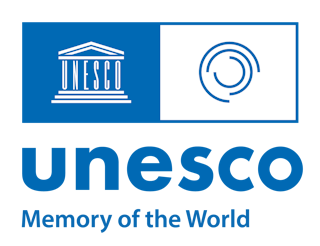The Deltadienst archives have been inscribed in UNESCO’s international Memory of the World Register. This decision by UNESCO was announced today, Friday, April 11, 2025. The archives of the Deltadienst (‘Delta Department’) document the history of the Delta Works, the Netherlands’ largest revolutionary hydraulic engineering works of the 20th century.
The archives are managed by the Zeeuws Archief (‘Zeeland Archives’) in Middelburg. Digitization of the Deltadienst archives is under way.

The archives of the Deltadienst tell the compelling story of a country and its people that successfully reclaim land taken by the sea, and secure it for future generations. The knowledge contained in the Deltadienst archives can help us devise plans for dealing with climate change and rising sea levels.
The Deltadienst archives have been included in the international Memory of the World Register, together with other documentary works of international importance. Among the 74 entries, there are five Dutch entries. The nomination was made after a two-year nomination process, during which international experts also critically reviewed the content. The Dutch UNESCO Commission already placed the Deltadienst archives on the national heritage list in 2022.
Flood disaster

With a significant part of the country below sea level, the vast majority of the Netherlands is vulnerable to flooding. In the flood of January 31, 1953 – the largest flood in the Netherlands since the St. Elizabeth Flood of 1421 – nearly 2000 people died after the dikes were breached during a severe storm and springtide.
The southwestern part of the Netherlands (with the provinces of Zeeland, South Holland and North Brabant) flooded and water was barely prevented from reaching the government capital and surrounding densely populated urban areas in the western part of the country.
Delta Plan
To protect the Netherlands against such disasters in the future, the Dutch government established the Delta Commission, which developed the Delta Plan. Important components were the shortening of the coastline by closing estuaries, raising dikes to ‘Delta Height’ and the design of innovative, large and complex storm surge barriers. These works – internationally known as the Delta Works – bring together numerous disciplines: hydraulic engineering, civil engineering, agriculture, recreation, landscape design and cultural history.

Deltadienst – Delta Department
The development of the Delta Plan, as well as the implementation and adjustments in policy and implementation, are recorded in the Deltadienst (‘Delta Department’) archives, 1956-1986, of Rijkswaterstaat, the national water management agency. Important preliminary investigations are documented in the archives of predecessors such as those of the Dienst Dijkherstel Zeeland (‘Zeeland Dike Restoration Department’), 1953-1956, and the Dienst Droogmaking Walcheren (‘Walcheren Reclamation Department’), 1944-1953.

Digitization
The Zeeuws Archief started digitization of the Deltadienst archives in conjunction with Metamorfoze, the Dutch National Library’s programme for the preservation of paper heritage. The programme is an initiative of the Ministry of Education, Culture and Science. A first part is expected to be published in the online inventories in 2026.
Zeeuws Archief & Memory of the World
The archives of the Delta Department and its predecessors in the international Memory of the World (MoW) Register:
Rijkswaterstaat,
- Dienst Droogmaking Walcheren (DDW), 1944-1953, archive nr 360.1
- Dienst Dijkherstel Zeeland (DDZ), 1953-1956, archive nr 359.1
- Deltadienst, Correspondentie, 1956-1986, archive nr 362.1
- Deltadienst, Kaarten en tekeningen, 1953-1991, toegang 362.2, inventory in progress
- Deltadienst, Afdeling Voorlichting, 1976-1987, archive nr 362.3
- Deltadienst, Afdeling Voorlichting, Films en video’s, 1956-1986, archive nr 362.4
Registrations of the Zeeuws Archief as of April, 2025:
- International Unesco MoW Register:
- 2025, archives of the Deltadienst
- 2011, archive of the Middelburgse Commercie Compagnie (MCC) on transatlantic slave trade
- Netherlands’ Unesco MoW Register:
- 2023, archives of the Koninklijke Maatschappij De Schelde (KMS) on shipbuilding
Memory of the World
UNESCO created the Memory of the World Register to draw international attention to documentary heritage. Memory of the World stimulates the preservation and accessibility of documentary heritage and wants everyone in the world to be aware of the value of these documents.